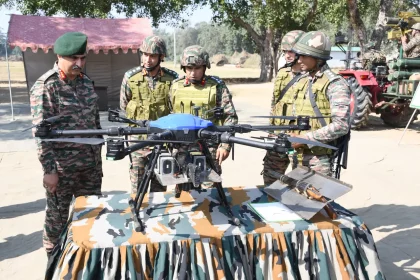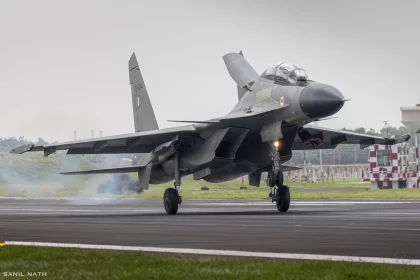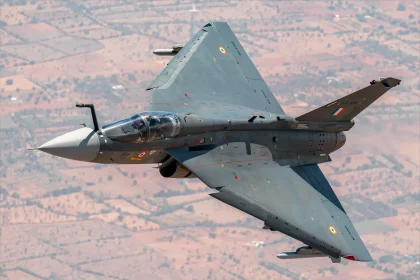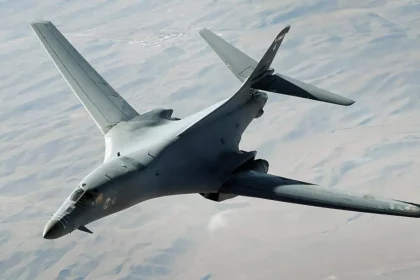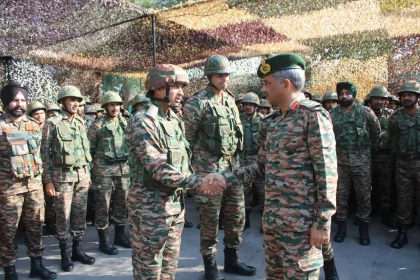Lt Gen Rajesh Pushkar Reviews Operational Preparedness of Pine Division Units
Lt Gen Rajesh Pushkar Praises Troops’ Innovation, Technology Integration, and High Operational Standards.
Indian Air Force to Host First-Ever International Squash Championship 2025 in New Delhi
Prestigious five-day tournament at Air Force Station New Delhi to feature global participants, promoting fitness, camaraderie, and sporting excellence within…
HAL Denies Reports of India–Armenia Su-30MKI Fighter Jet Export Deal Amid Growing Speculation
Unconfirmed Reports Suggest $3 Billion Agreement; HAL Maintains No Official Directive Received.
DRDO’s ‘Swayam Raksha Kavach’ Elevates TEJAS MK-1A To Stealth-Capable Fighter Status
New Electronic Warfare Suite Marks a Major Leap in India’s Indigenous Air Power.
USAF’s B-1B Lancer To Join Landmark Indo-US Air Exercise Amid Ongoing Trade Tensions
Deployment of long-range strategic bomber underscores deepening military trust despite tariff disputes.
Lt Gen Manoj Kumar Katiyar Reviews Operational Preparedness in Forward Areas of Jammu, Kathua, Samba and Pathankot
Lieutenant General Manoj Kumar Katiyar, PVSM, UYSM, AVSM, Army Commander, conducted a comprehensive review of the operational preparedness of troops…

